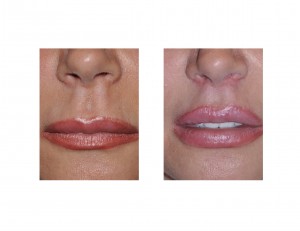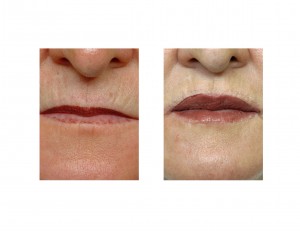Excisional methods of lip rejuvenation, known as lip lifts, are an historic treatment. While pushed aside with the introduction and widespread adoption of injectable fillers, they are making a comeback with the realization that fillers can not solve all insufficient or aging lip problems. They are beginning to reappear in publications and at meetings as a viable method for making lips bigger by increasing vermilion show and decreasing the vertical lip distance between the base of the nose and the upper lip.

In the September 2011 issue of the Archives of Facial Plastic Surgery, a study was published in the long-term analysis of surgical correction of the senile upper lip. This was a retrospective review of 30 patients who had either a lip lift or a lip advancement performed for an aging upper lip. (15 lifts, 15 advancements) Digital imaging analysis was used to standardize each patient’s before and after results. The mean follow-up of the patients was just over four years. The revision rate was 7% with all revisions occurring in the vermilion advancement patients and none in the subnasal lip lift patients. Interestingly, all revision occurred in patients who were smokers. Besides significant improvement in lip appearance in all patients, both types of lip lifts showed sustained results out to the duration of the study.
Unlike synthetic injectable fillers and even fat, permanent lip augmentation is elusive. Lip lift and advancements are well known to offer significant improvement and this study supports the observation that those results are sustained and thus permanent. I do find it interesting that the study did not show a difference between subnasal lip lifts vs vermilion advancements as lip lifts have historically been known to have some degree of ‘relapse’ and secondary relaxation lengthening of the result. Based on this study and the technique used (no muscle manipulation or suturing) there is no need to overcorrect a lip lift since significant loss of the result is not seen.
Despite the durability of lip lifts, they still play a minor role in lip rejuvenation. Because of the scar burden that they create and the volumetric benefits of fillers, lip lifts are reserved as a salvage procedure for failed lip rejuvenation attempts by other methods. Even in a patient who has a very thin lip regardless of age and seems like a good candidate for a lip lift, I want them to try fillers first to prove that surgical modification of the lip is desired.
Dr. Barry Eppley
Indianapolis, Indiana



